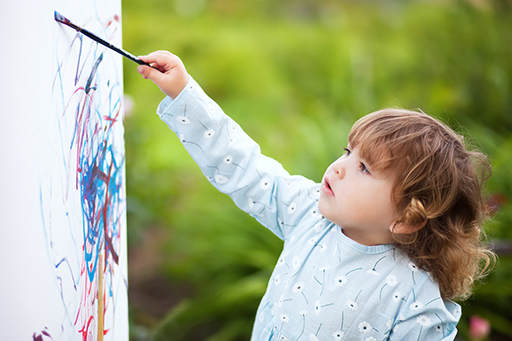6.6 Mark-making
Long before children learn to write, they begin making marks and drawings. Sometimes children’s marks are symbolic, that is, they are intended to represent something; what might look like a scribble to us, can be a child’s attempt at drawing their parent, for example.
At other times children like to draw just for the joy of the movement and seeing the resulting marks appear. Young children need large surfaces with chunky crayons, chalks or paint brushes.
Through lots of experiences of making marks with gross motor movements, they gradually develop the fine motor control needed to form recognisable shapes, letters or numbers. Vertical surfaces, such as painting easels or blackboards, encourage large whole-arm movement, incorporating up and down, side-to-side and circular actions.

In the warmer weather, you might give children large paint brushes or rollers with a bucket of water to paint on outside walls. Similarly, spray bottles with water are great fun and develop the muscles in the hand and wrist.
